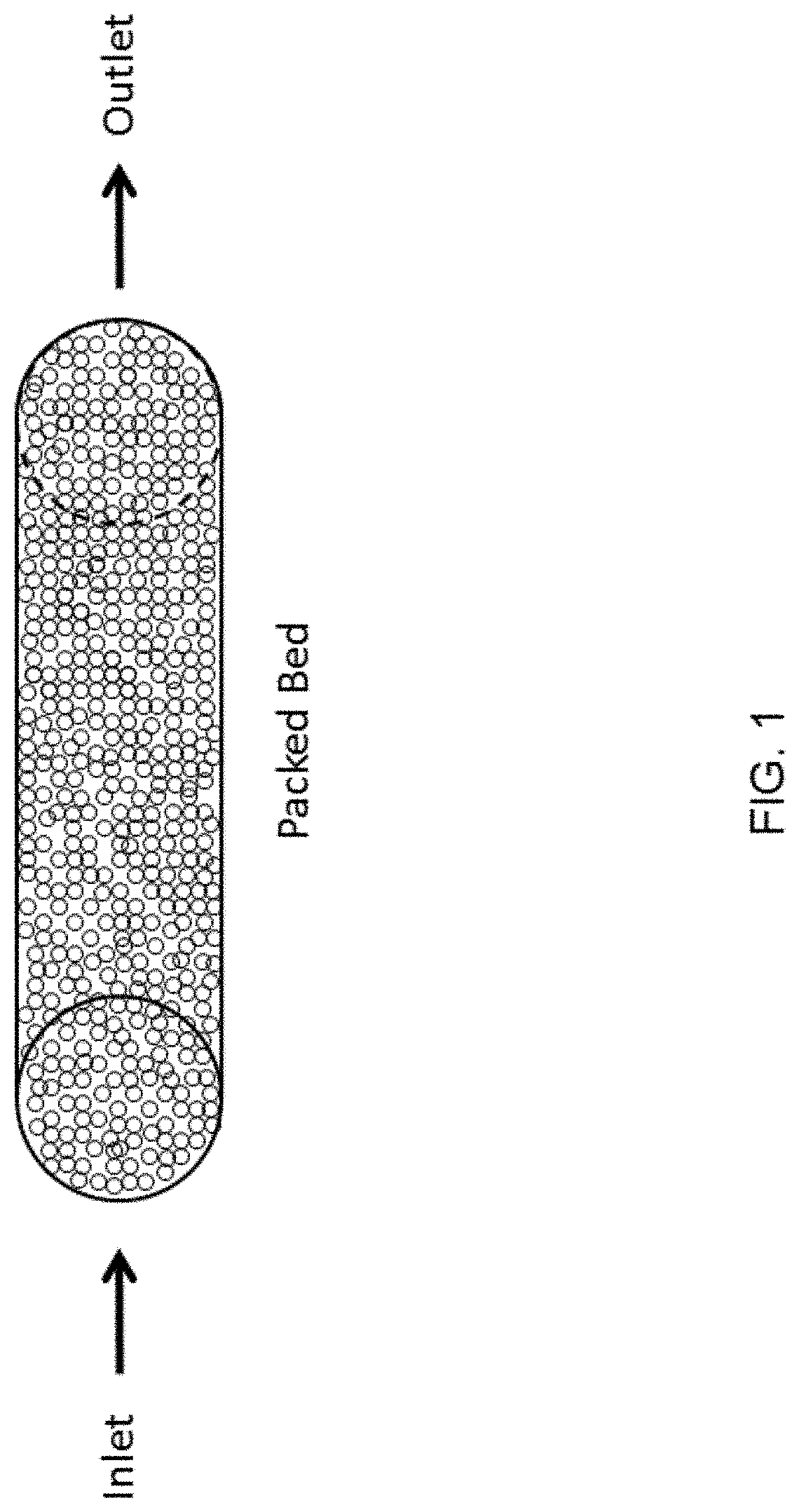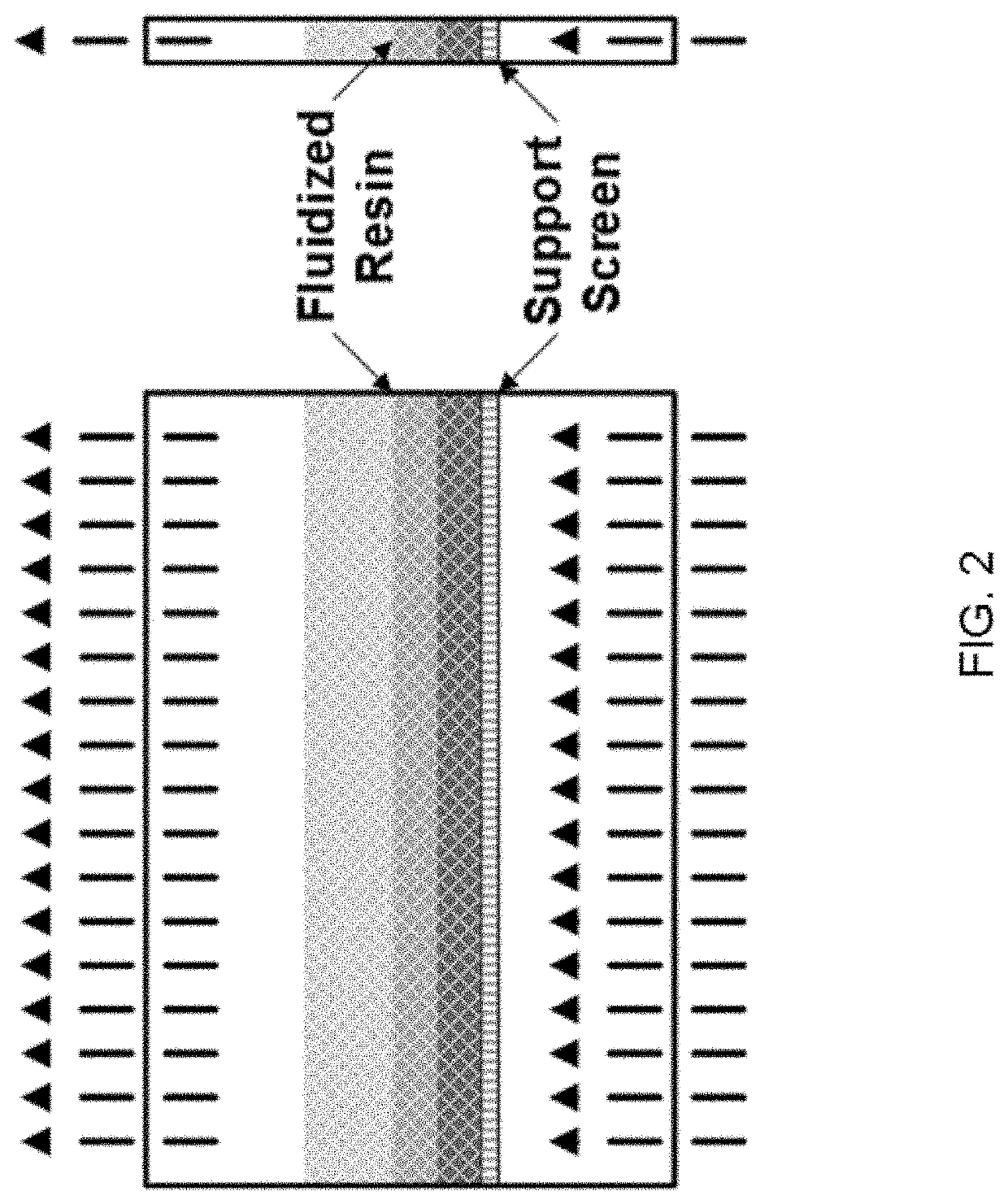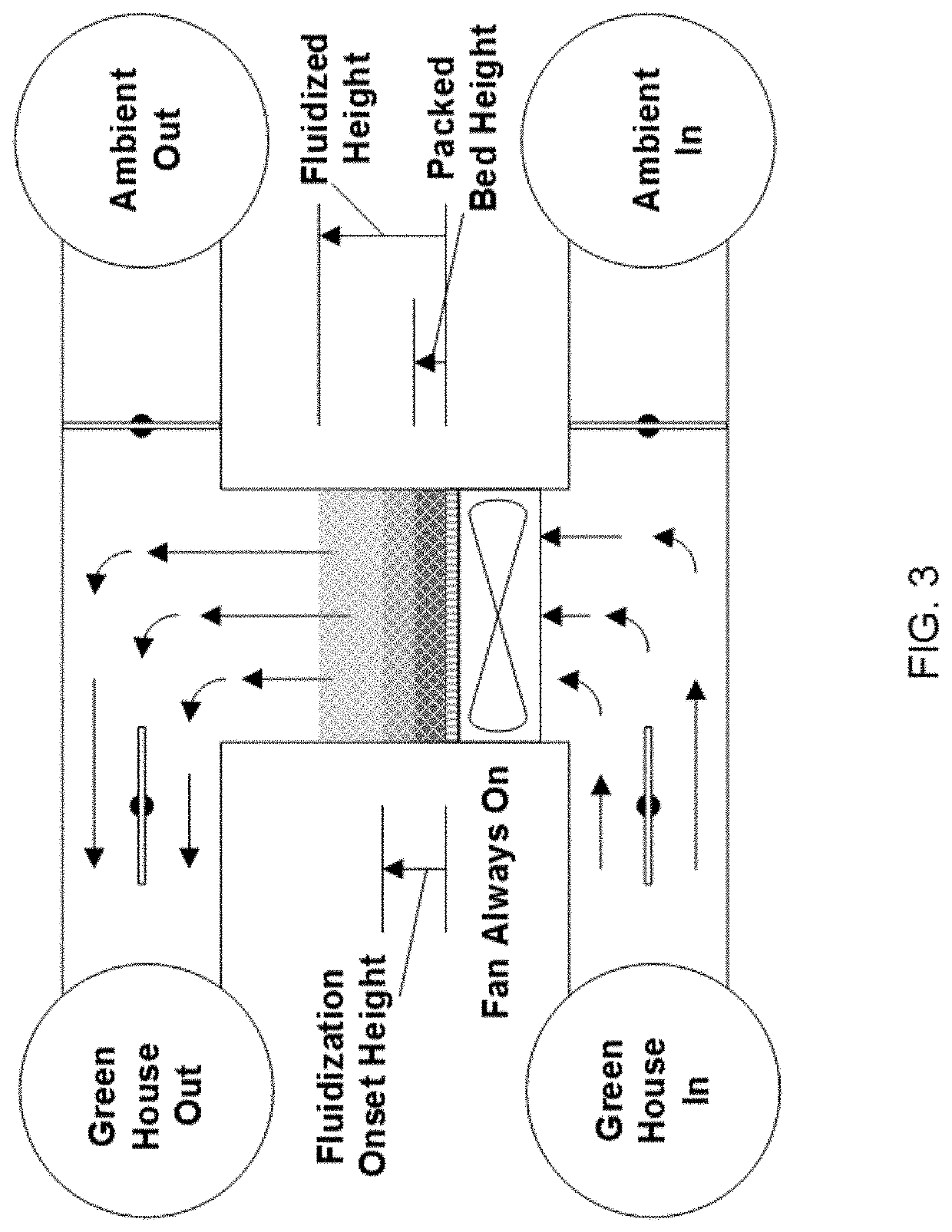Fluidized bed extractors for capture of co2 from ambient air
- Summary
- Abstract
- Description
- Claims
- Application Information
AI Technical Summary
Benefits of technology
Problems solved by technology
Method used
Image
Examples
example 1
Simulation of Fluidized Bed Extractor Performance
[0118]FIG. 7 provides one non-limiting example of simulation data for a fluidized bed extractor which illustrates the predicted relationships between bed height, pressure drop across the bed, and the carbon dioxide transfer capacity of the bed, i.e., the amount of carbon dioxide captured from ambient air and subsequently released by the bed (in units of grams CO2 per humidity swing cycle) under a defined set of bed design parameters and operating conditions.
example 2
Experimental Performance Data for Carbon Dioxide Capture and Release Using a Humidity Swing
[0119]FIG. 8 provides one non-limiting example of experimental performance data for carbon dioxide capture and release using a fluidized bed extractor, wherein CO2 is released from an anion exchange resin using a humidity swing cycle of approximately 120 minutes in duration (approximately 60 minutes of adsorption and 60 minutes of desorption). Tests were performed in an open-loop, laboratory-scale environmental chamber utilizing a 2″ diameter tube (1.87″ inner diameter) as the housing for a fluidized bed consisting of 74 grams of a commercial anion exchange resin (Purolite A500 (OH form), Purolite, Bala Cynwyd, Pa.). The inlet gas flows for each swing segment was set to 25 standard liters per minute (slpm) and temperature was held between 22° C. and 23° C. The conditions of the ambient or adsorption flow were 8.5 ppt H2O (32% RH) and ˜430 ppm CO2. The desorption gas stream conditions were ˜23 ...
example 3
Description of a “Typical” Humidity Swing Cycle for a Pilot CO2 Capture System
[0121]FIG. 9 provides one non-limiting example of CO2 adsorption isotherm data for a typical “moisture swing” cycle using a humidity-sensitive sorbent at 25 C. The proposed prototype CO2 capture system is designed to achieve a transfer capacity of approximately 1.4 kg CO2 / day over 18 hours (75 gm CO2 / hr). The system is designed to operate near the lower practical capacity limit for a commercial unit. As envisioned, the system will consist of two fluidized sorbent beds that are connected in parallel and that operate 180-degrees out of phase, e.g., one will undergo an adsorption cycle while the other is undergoing a desorption cycle.
[0122]The design specification assumes that the gas stream conditions (e.g., temperature, CO2 concentrations, H2O concentrations, specific gas throughput, etc.) for the gases that cycle through the unit result in an effective transfer capacity equal to 1.25 gm CO2 / nominal kg resi...
PUM
| Property | Measurement | Unit |
|---|---|---|
| Weight | aaaaa | aaaaa |
| Temperature | aaaaa | aaaaa |
| Flow rate | aaaaa | aaaaa |
Abstract
Description
Claims
Application Information
 Login to View More
Login to View More - R&D Engineer
- R&D Manager
- IP Professional
- Industry Leading Data Capabilities
- Powerful AI technology
- Patent DNA Extraction
Browse by: Latest US Patents, China's latest patents, Technical Efficacy Thesaurus, Application Domain, Technology Topic, Popular Technical Reports.
© 2024 PatSnap. All rights reserved.Legal|Privacy policy|Modern Slavery Act Transparency Statement|Sitemap|About US| Contact US: help@patsnap.com










